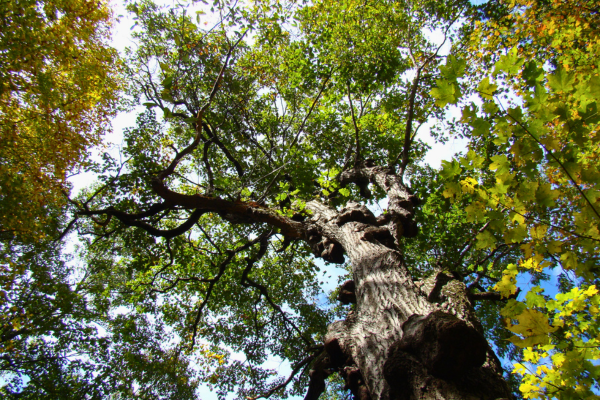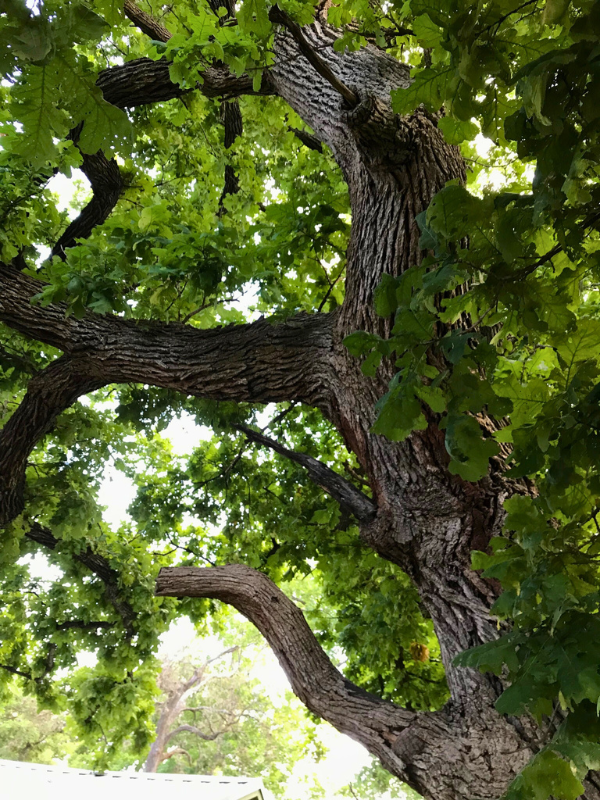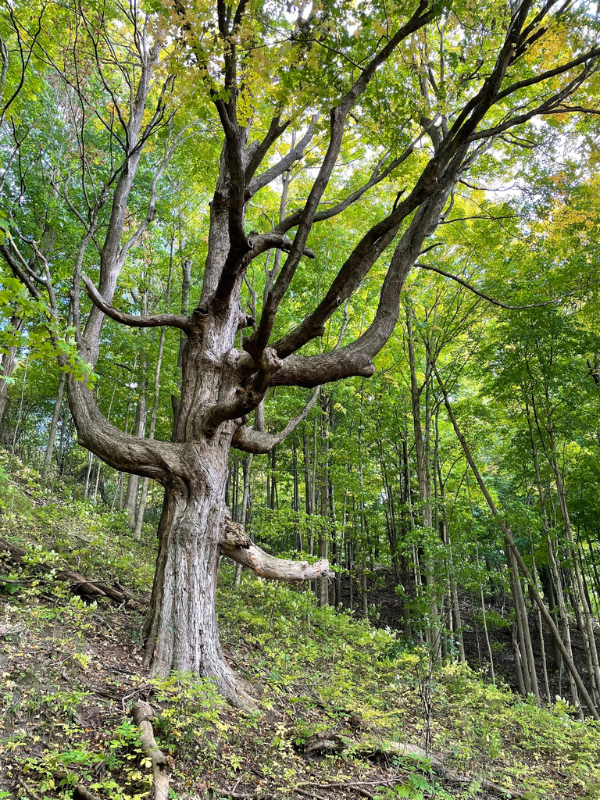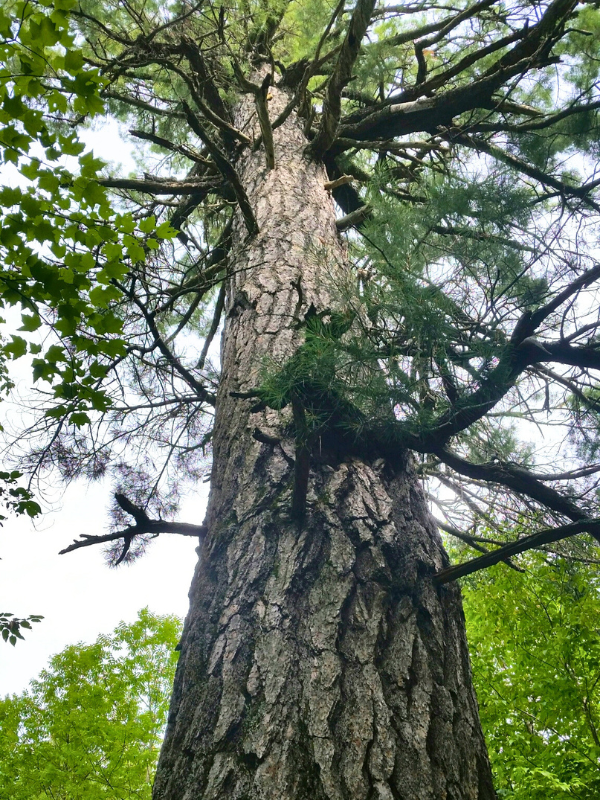What are Keystone Species?
Keystone species are animals or organisms that have a disproportionately large impact on the ecosystems in which they live and are critical to maintaining ecosystem health and biodiversity. Keystone species are critical to maintaining ecosystem health. Examples like beavers and wolves demonstrate how these species profoundly impact their environments. Beavers build dams that create wetland habitats, while wolves keep other animal populations in check, preventing plant over-browsing that can harm habitats and reduce biodiversity. While all species are important, the influence of a keystone species is much greater than that of others because they maintain balance in the ecosystem and support its biodiversity. Without these species, ecosystems could collapse or become dramatically altered.

Ecological Roles of Oaks, Sugar Maples and White Pines
Oaks (Quercus spp.), sugar maples (Acer saccharum) and white pines (Pinus strobus) are crucial for the health of Ontario’s forests. They regulate light through their expansive canopies, creating conditions for shade-tolerant plants to thrive. Their nutrient-rich leaf litter enhances soil fertility and moisture retention, benefiting the entire ecosystem. These trees also provide food for wildlife — oaks produce acorns that sustain a variety of animals, sugar maples offer seeds and sap and white pines provide seeds and bark. Additionally, their trunks and canopies offer vital shelter for cavity-dwellers, small mammals and birds.

Species-Specific Contributions
Oaks are among the most important species in Ontario's forests. Their acorns provide sustenance to animals like squirrels, chipmunks, deer, blue jays and wild turkeys. These species feed on acorns during fall or store them away in caches for use throughout winter. Oaks are also important for insects because they support more insect species than any other plant in eastern North America. Hundreds of insect species feed on the leaves, wood and bark of oak trees, which in turn serve as food for other wildlife. The thick canopy that oaks provide make for ideal nesting sites for many species of songbirds and some hawk species, and their dense trunks offer habitat for cavity-dwellers like woodpeckers, owls and bats.

Sugar maples are also key to the structure of forests, with their dense canopy regulating light and supporting a variety of plants that require shadier conditions. Their samaras (seeds) feed squirrels, chipmunks and birds, and their foliage offers food for deer and other herbivores. Sugar maples are famous for their sugary sap that people use to make maple syrup, but this same sap also feeds birds like yellow-bellied sapsuckers, who drill holes into the trunks to access the sap. Sap often flows from wounds in the bark during early spring and are an important food source for early butterfly species like Mourning Cloaks, Commas and Red Admirals, along with many species of adult flies and even some bees. The thick trunks of sugar maples also provide vital nesting sites for cavity-dwellers and shelter for bats and squirrels, while their canopy provides nesting sites for many kinds of songbirds and some species of hawks.

White pines are the tallest trees in Ontario and create a distinct vertical structure in the forest. They stabilize the ecosystem by acting as windbreaks and anchoring soil with their roots, fostering a more favourable environment for many plants. Their needles, cones and branches contribute nutrient-rich organic matter to the forest floor. As the needles decompose, they release acids that lower the soil pH, influencing which plants can thrive nearby. Many species of wildlife also depend on white pines for food and shelter. The seeds are fed on by squirrels, chipmunks and birds, while their bark sustains herbivores like rabbits, deer and porcupines. White pines are vital for cavity-dwelling species, such as woodpeckers, which excavate nesting sites in their trunks, and bats that roost in their cavities. Their canopy offers shelter for small mammals and birds, and their height makes them prime nesting sites for bald eagles and some hawk species.

Appreciating the Beauty and Value of Oaks, Sugar Maples and White Pines
Oaks, sugar maples and white pines are standout native trees in Ontario’s landscapes, offering both beauty and vital ecological benefits. These iconic species shape natural forests by creating habitats and providing food and shelter for wildlife. But their importance extends beyond natural areas – these keystone trees also enhance the beauty and health of our urban forests. Their presence in parks, streetscapes and backyards helps create a more sustainable, biodiverse urban environment. By planting these trees in your own yard, you can help boost #BackyardBiodiversity while contributing to the resilience of both the natural and urban forests of Ontario.
Ready to plant a tree in your yard? Apply today to the Backyard Tree Planting Program and add a species that supports nature’s balance, right at home!
Justin Lewis is the Marketing and Communications Lead at LEAF
The #BackyardBiodiversity campaign is a partnership initiative with the Toronto Wildlife Centre and is supported by Ontario Power Generation.
LEAF offers a subsidized Backyard Tree Planting Program for private property. The program is supported by the City of Toronto, the Regional Municipality of York, the City of Markham, the Town of Newmarket, the Regional Municipality of Durham, the Town of Ajax, the Township of Brock, the Municipality of Clarington, the City of Oshawa, the City of Pickering, the Township of Scugog, the Town of Whitby and Ontario Power Generation.
